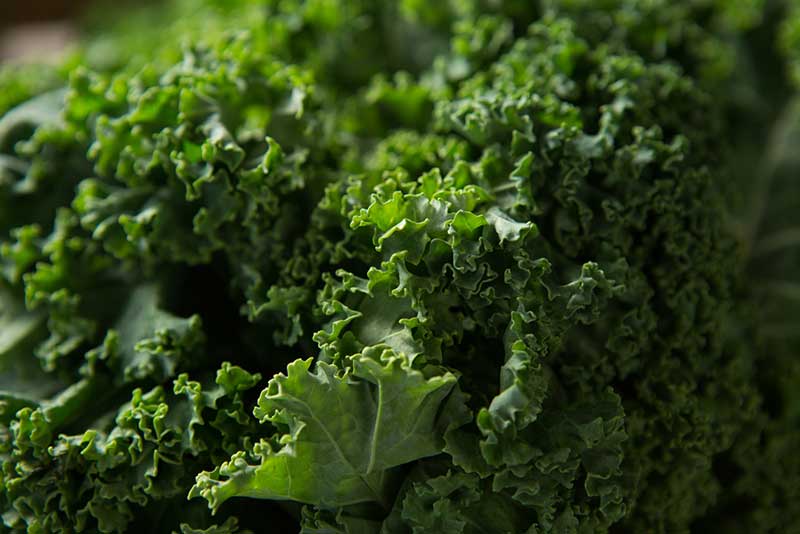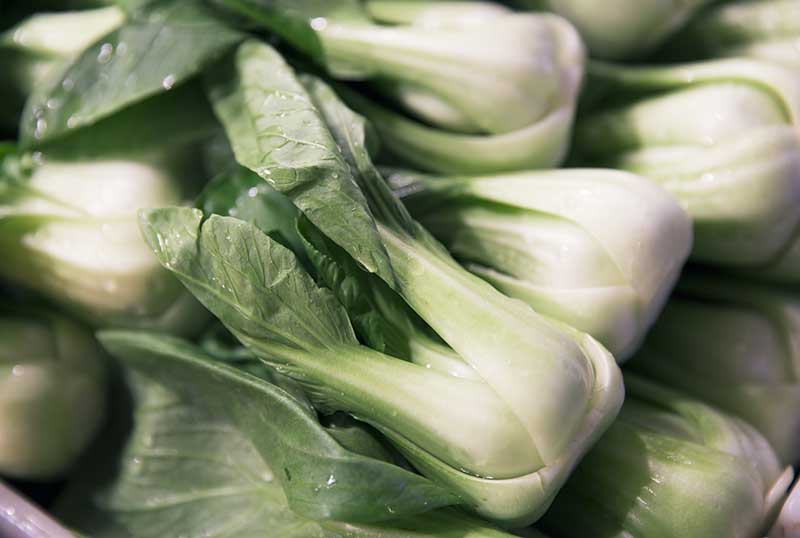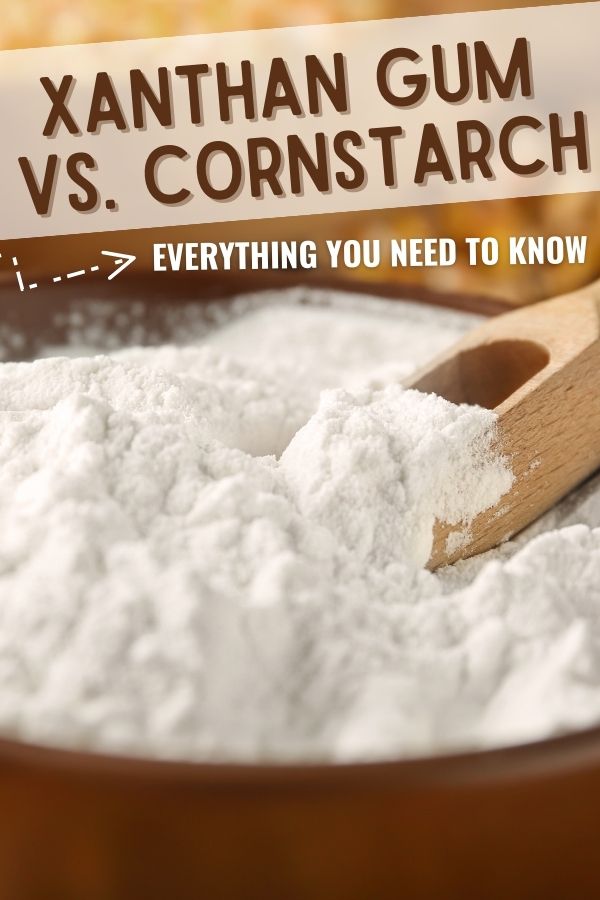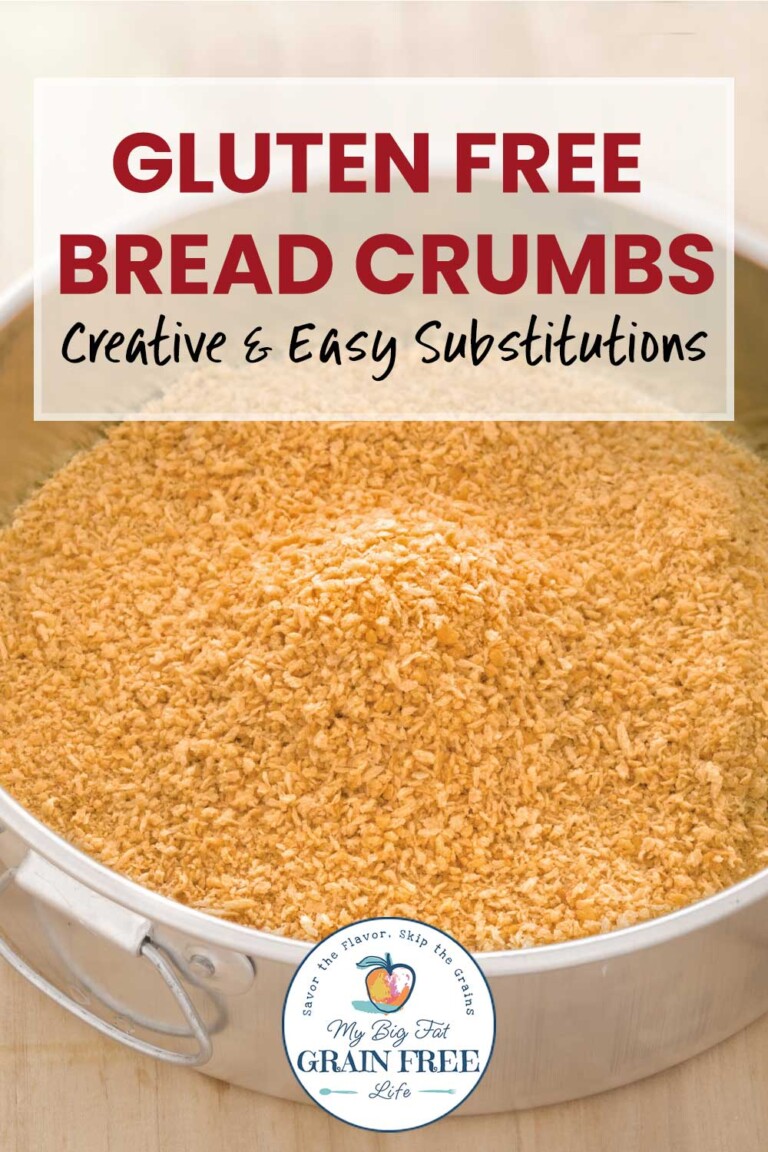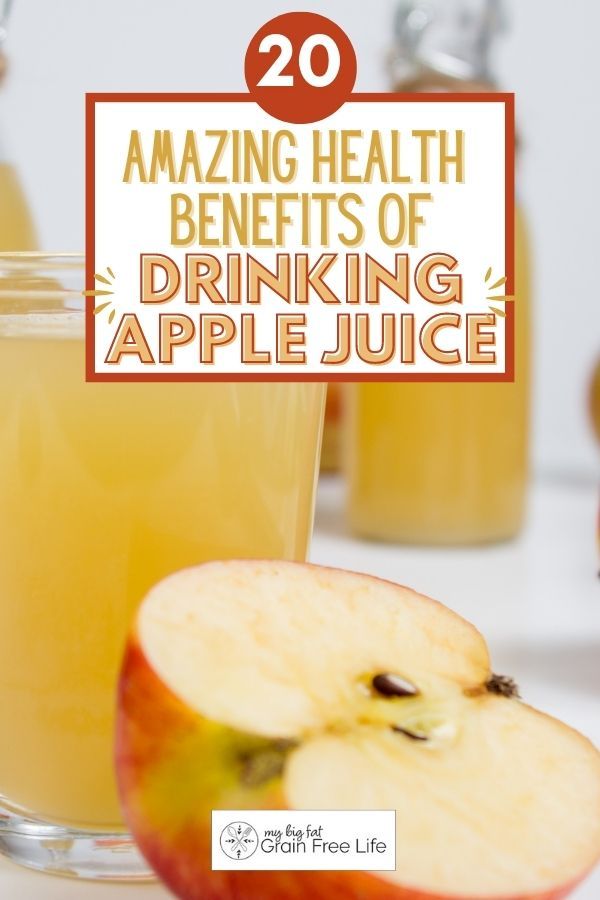The Ultimate Cruciferous Vegetables List & Complete Guide
This post may contain affiliate links. If you make purchase after clicking a link, I may receive a commission at no extra cost to you.
Last Updated on September 18, 2023
Are you wondering what vegetables are cruciferous? Take a look at this ultimate cruciferous vegetables list for a complete guide to what cruciferous vegetables are, the individual types of vegetables, and their uses and health benefits.

Cruciferous Vegetables
Cruciferous vegetables, a popular category of nutrient-rich plants, have gained significant attention in recent years for their potential health benefits.
There are a variety of different types of vegetables that are in the Cruciferae family, including some green leafy vegetables, tubers like turnips, rutabega, kohlrabi, and even root vegetables such as the radish.
We will explore the defining characteristics, their health advantages, and provide a complete cruciferous vegetables list.
Brassica Family of Vegetables
The vegetable family Brassicaceae (also called Cruciferae) is a diverse group of vegetables that includes well-known members such as broccoli, kale, cauliflower, Brussels sprouts, cabbage, and turnips.
These vegetables are treasured for their distinct flavors, bold colors, and nutritional value. However, what many people may not realize is that every member of the brassica vegetables family is also considered a cruciferous vegetable, but not all cruciferous vegetables come from the brassica genus.
What are Cruciferous Vegetables?
The cruciferous family of vegetables share specific botanical traits, including an abundant supply of vitamins, minerals, and dietary fiber, along with beneficial phytochemicals, such as quercetin, glucosinolates and indole-3-carbinol.
What makes a vegetable cruciferous?
These cool weather veggies are characterized by their four-petal flowers, which form a cross-like shape, hence the name cruciferous. You can see the picture below of broccoli’s four-petal flowers.
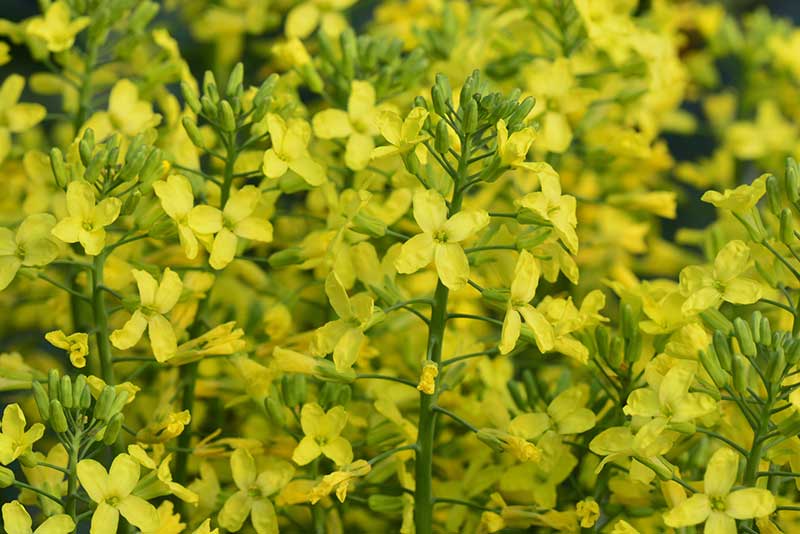
Cruciferous Vegetables List
Cruciferous vegetables offer a wide range of health benefits, thanks to their unique nutrient composition and substantial glucosinolate content.
Incorporating these vegetables into your diet can contribute to improved overall health and well-being. Experiment with different cooking methods and explore recipes to enjoy these flavorsome and nutritious cruciferous veggies.
This cruciferous vegetables list may even introduce youto some new types of veggies to add to your diet!

Broccoli
With its recognizable bright green compact florets and thick stalks, this popular vegetable has a crisp and slightly bitter taste. Its texture is firm yet tender, making it ideal for various cooking methods.
It can be boiled, steamed, stir-fried, or roasted, allowing it to retain its color, crunch, and nutritional value. It pairs well with a variety of ingredients such as garlic, lemon, cheese, and nuts.
From a nutritional standpoint, broccoli is full of essential vitamins and minerals. It is an excellent source of vitamin C, vitamin K, and folate. It also contains fiber, which aids in digestion and promotes a healthy gut.
Additionally, broccoli is low in calories and carbohydrates, making it a suitable choice for those watching their weight or following a low-carb diet. This green veggie is a common addition in my gluten free casserole recipes.
Kale
Kale is a versatile leafy green vegetable known for its rich nutritional profile and unique taste. Its flavor can be described as slightly bitter with a hint of earthiness. The texture is crisp and crunchy, especially when raw, and becomes tender when cooked.
It’s a popular ingredient in salads, where its sturdy leaves hold up well to dressings. When cooked, kale can be sautéed, steamed, or baked into crispy chips. It can also be blended into smoothies, made into kale juice, (or added to spinach juice) or added to AIP soups and stews to enhance their nutritional value.
Kale is low in calories but high in fiber, making it a great option for weight management and digestive health. It’s also packed with vitamins A, C, and K, providing antioxidants that support a healthy immune system and promote good vision. Additionally, it contains minerals like calcium, magnesium, and potassium, contributing to strong bones and overall wellness.
Cauliflower
Cauliflower is known for its mild, slightly sweet taste and firm, yet tender texture. It is often described as having a subtle nutty flavor.
It can be steamed, boiled, roasted, or even mashed to create a creamy, nutritious side dish. Additionally, it can be grated and used as a substitute for rice or transformed into a low-carb pizza crust.
Cauliflower is an excellent source of vitamin C, providing more than the daily recommended intake. It also contains vitamin K, which aids in blood clotting and bone health. Furthermore, it is a rich source of fiber, low in calories, and has zero cholesterol or fat.
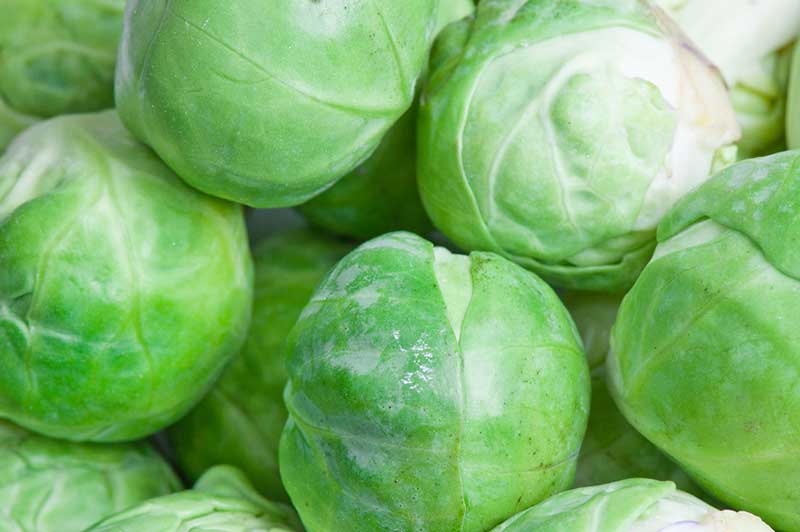
Brussels Sprouts
Brussels sprouts have a mild and slightly sweet taste, with a slightly nutty undertone. They have the appearance of miniature cabbages with a firm, yet tender texture, providing a pleasant mouthfeel.
They can be enjoyed both cooked and raw. When cooked, Brussels sprouts can be roasted, sautéed, steamed, or grilled, allowing for various flavor profiles to be achieved. They are a popular addition to stir-fries, salads, pasta dishes, and even soups.
Brussels sprouts are low in calories but high in essential nutrients, including vitamin C, vitamin K, folate, and fiber. They also contain antioxidants and phytochemicals that support overall health and may even have anti-inflammatory properties.
Brussels sprouts are great when raosted with root vegetables and some types of squash, like butternut.

Cabbage
Cabbage is known for its crisp texture and mild flavor. It is commonly used in a variety of culinary dishes. With its slightly sweet and earthy taste, cabbage complements a wide range of ingredients.
The texture of cabbage varies depending on how it is cooked; it can be enjoyed raw, providing a crunchy and refreshing bite, or cooked, resulting in a softer and more delicate texture.
There are many health benefits of red cabbage, so you don’t have to just stick to the green varieties.
Cabbage is often incorporated into salads, coleslaws, and stir-fries, where its crispness adds a delightful crunch. Cabbage can also be fermented to create sauerkraut, a tangy and probiotic-rich condiment that is frequently used in sandwiches, hot dogs, and sausages.
Apart from its culinary uses, cabbage is also highly nutritious. It is low in calories and packed with vitamins C and K, providing essential antioxidants and supporting bone health. Cabbage is also a good source of fiber, aiding in digestion and promoting a healthy gut. Additionally, it contains nutrients like folate, manganese, and potassium.
Bok Choy
Bok choy, also known as pak choi, is highly regarded for its unique taste, mild yet slightly peppery, and its crisp texture. Widely used in Asian cuisine, this vegetable adds depth to stir-fries, soups, and salads. You can find bok choy in two forms: fully mature bok choy and baby bok choy.
Full of essential nutrients, this leafy green is an excellent source of vitamins A, C, and K. It also contains essential minerals like calcium and iron.
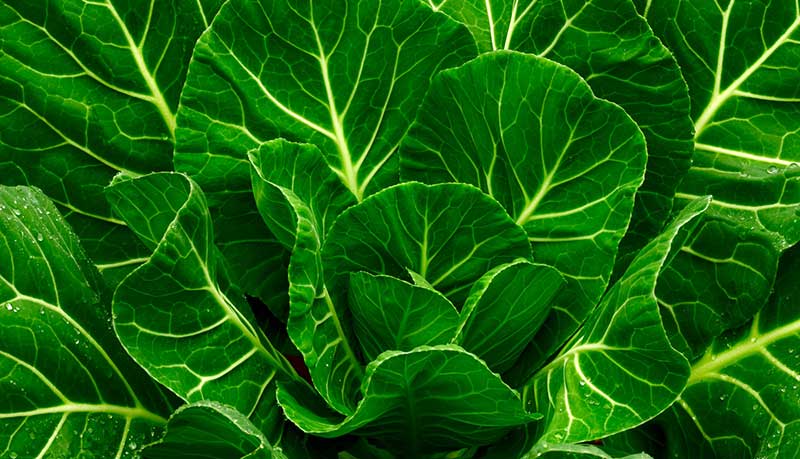
Cruciferous Vegetables List
There are even more cruciferous vegetables to explore, so keep reading to learn more.
Collard Greens
With a slightly bitter and earthy taste, collard greens have a tender yet hearty texture, making them a perfect addition to various dishes.
Collard greens can be enjoyed both raw and cooked, adding flavor to salads, wraps, and smoothies. When cooked, collard greens develop a tender texture and pair well with other ingredients in stir-fries, soups, and stews. They can also be used as a wrap substitute for creating healthy and low-carb wraps or stuffed with fillings.
These greens are an excellent source of vitamins A, C, and K, as well as folate and calcium. They are low in calories and carbohydrates and contain high amounts of fiber, which helps with digestion and promotes a feeling of fullness.
You might also want to check out: Complete Guide on Greens: Collards, Mustards & Turnip Greens
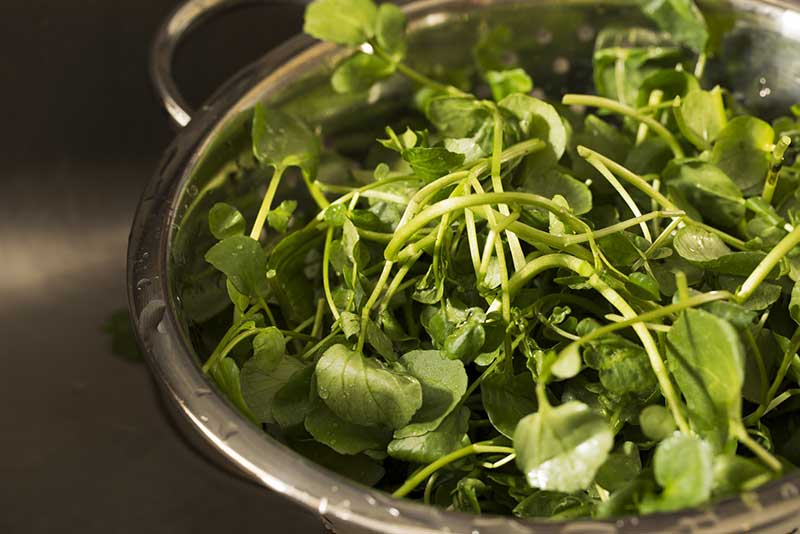
Watercress
Watercress is a unique leafy green that offers a refreshing, peppery flavor. Its delicate yet crisp texture adds a pleasant crunch to dishes. This versatile ingredient shines in salads, sandwiches, soups, and as a garnish.
Loaded with essential nutrients, this superfood is a great source of vitamins A, C, K, and E, as well as calcium, iron, and antioxidants. It supports immune function, bone health, and boosts overall vitality.

Arugula
Arugula, also known as rocket or roquette, is a leafy green vegetable with a distinct peppery flavor. It has a tender and crisp texture and adds a pleasantly bitter and slightly mustard-like kick to dishes.
There’s a ton of health benefits of arugula. It is low in calories but high in essential vitamins and minerals. A serving of arugula provides a good dose of vitamin K, vitamin A, vitamin C, and folate. It is also rich in antioxidants, which help protect the body against cell damage.
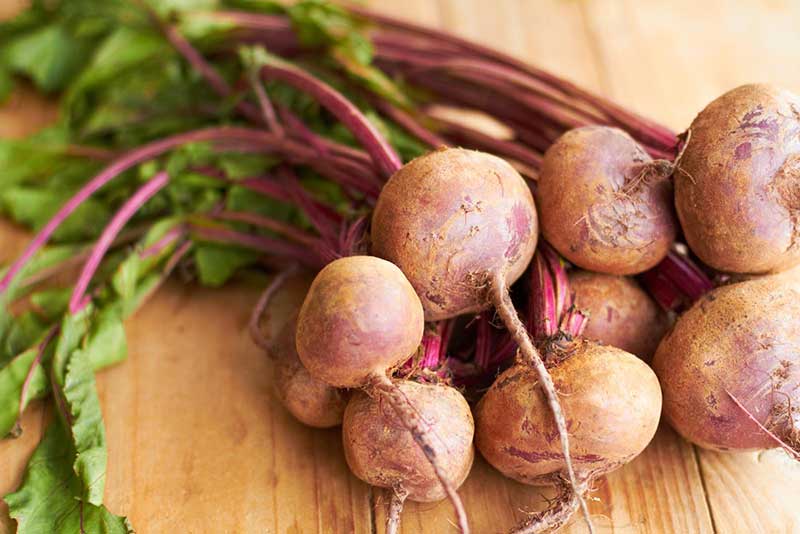
Radishes
Radishes are small, root vegetables known for their distinct flavor and crisp texture. With a slightly spicy and peppery taste, they add a refreshing kick to various dishes.
When it comes to culinary uses, radishes can be enjoyed raw or cooked. Raw radishes can be sliced and added to salads, used as a garnish, or enjoyed as a snack. They can also be pickled to add a tangy twist to dishes. Cooked radishes can be roasted, braised, or sautéed, which mellows their flavor and enhances their natural sweetness.
Radishes are low in calories but high in antioxidants, vitamins, and minerals. They are a great source of vitamin C, providing support to the immune system, and also contain fiber, potassium, and folate. Additionally, radishes offer a small amount of vitamin B6, magnesium, and calcium.
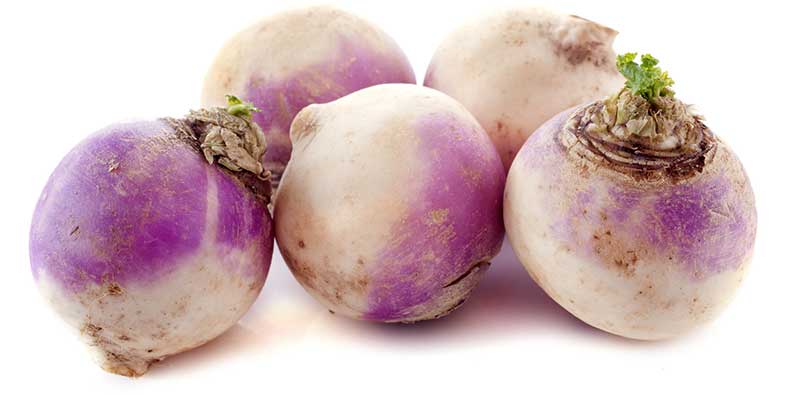
Turnips
Turnips have a crisp texture and a mildly sweet and slightly peppery taste, similar to radishes. Culinarily, turnips are versatile and can be enjoyed in various ways. They can be cooked, roasted, mashed, or added to soups and stews.
They can also be thinly sliced or grated and used in salads for a refreshing crunch. Moreover, turnip greens are edible and can be cooked just like spinach or used in salads for an added nutrient boost.
Turnips are low in calories and a great source of dietary fiber, vitamins, and minerals. They are particularly rich in vitamin C, providing more than 40% of the recommended daily intake in just one medium-sized turnip. Turnips also contain vitamins K, E, and B6, as well as minerals such as potassium, manganese, and calcium.
Also see: Rutabaga Vs Turnip
Rutabaga
Rutabaga, also known as swede or neep, is a root vegetable with a taste that falls between a turnip and a cabbage. It offers a mildly sweet and earthy flavor profile. Its texture is firm and dense, and it can be enjoyed both raw and cooked.
When cooked, rutabega becomes tender and develops a creamy consistency, making it a great addition to stews, soups, and roasted vegetable medleys. It can also be mashed, fried, or grated to add a unique twist to dishes.
Packed with fiber, vitamins C and E, and potassium, rutabaga provides numerous health benefits. It supports a healthy immune system, aids digestion, and promotes heart health. Moreover, rutabaga is low in calories and carbs, making it an ideal choice for those watching their weight or following a low-carb diet.
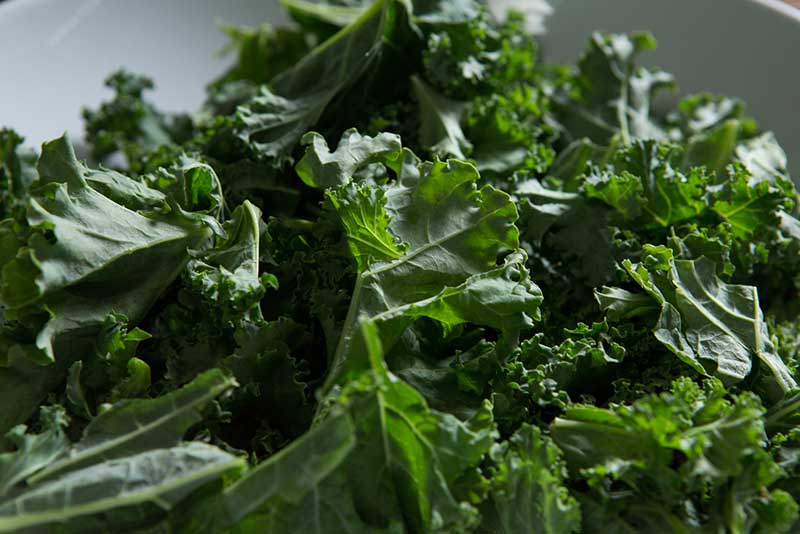
Mustard Greens
This leafy green cruciferous vegetable is known for its distinct peppery flavor, which intensifies when cooked. The texture of mustard greens can vary, but they are generally tender and slightly crunchy.
They are commonly used in salads, stir-fries, sautés, and soups. When cooked, their slightly bitter taste mellows, making them versatile in various dishes. Mustard greens can also be pickled or used as a wrap for fillings.
In terms of nutrition, mustard greens offer an array of health benefits. They are low in calories, yet high in vitamins A, C, and K. They are also a good source of folate, calcium, iron, and antioxidants. Incorporating mustard greens into your diet can support bone health, boost immunity, and promote healthy digestion.
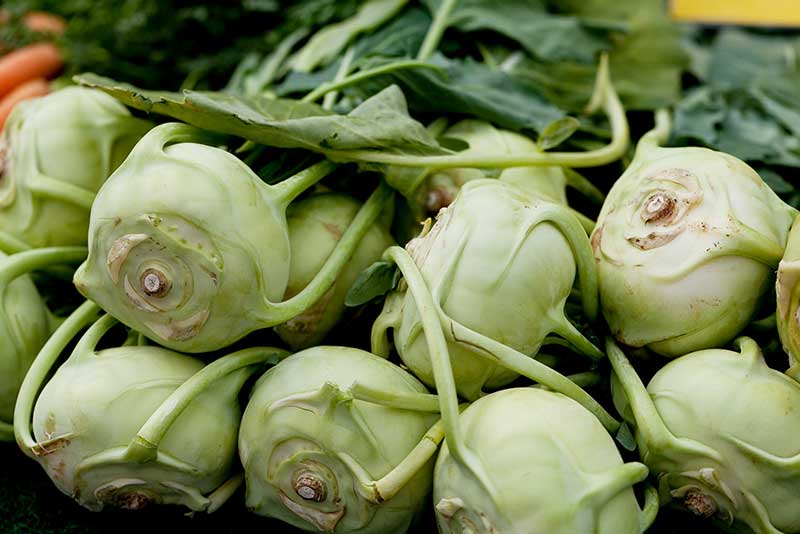
Kohlrabi
Kohlrabi is a nutritious vegetable that has a crisp texture, similar to that of an apple, and a mildly sweet and subtly spicy taste. This unique vegetable can be enjoyed raw or cooked, making it a wonderful addition to salads, slaws, stir-fries, and soups.
It is low in calories but high in fiber, providing digestive benefits and aiding in weight management. Kohlrabi is also a great source of vitamins C and K, which support immune function and bone health. Additionally, it contains significant amounts of potassium, which is essential for heart health, and antioxidants, which help protect against cell damage.
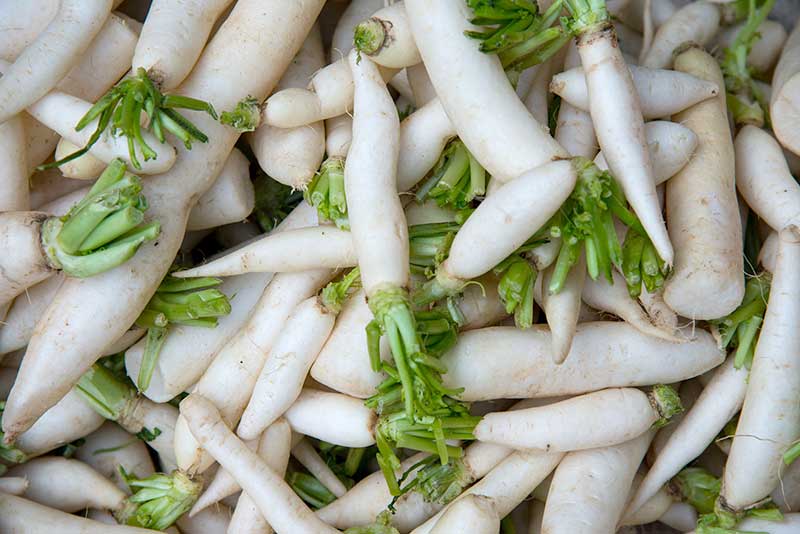
Daikon Radish
Daikon radish, also known as Japanese radish or white radish, is a root vegetable that is commonly used in Asian cuisine. It has a mild, slightly peppery taste and a crisp texture, similar to that of a turnip.
This radish is a staple ingredient in many dishes, both raw and cooked. It can be enjoyed in salads, pickled, or added to stir-fries, soups, stews, and curries. When cooked, daikon radish softens and absorbs the flavors of other ingredients, making it a great addition to various recipes.
This low-calorie vegetable is packed with essential nutrients. Daikon radish is an excellent source of Vitamin C, which supports immune function and collagen production. It is also rich in fiber, which aids digestion and promotes satiety.
Additionally, daikon radish contains minerals like potassium and calcium, as well as antioxidants that contribute to overall health.

Broccolini
Broccolini, also referred to as baby broccoli, combines the flavors of broccoli and Chinese kale. With a more delicate and slightly sweeter taste compared to regular broccoli, broccolini offers a unique and appealing flavor.
In terms of texture, broccolini features long, slender stems that are tender and crisp, while the leaves are soft and slightly bitter. Its overall texture provides a pleasant crunch.
You can easily steam or sauté it as a side dish to accompany main meals. It also pairs well with pasta dishes, stir-fries, and even salads. Additionally, broccolini can be roasted or grilled to enhance its natural flavors.
Full of vitamins A, C, and K, as well as dietary fiber, it offers numerous health benefits. These include boosting immune function, supporting healthy vision, and promoting optimal digestion. Broccolini is also rich in essential minerals such as iron and calcium, making it a great choice for maintaining overall health.

Romanesco
Romanesco is a unique and visually striking vegetable that’s closely related to cauliflower and broccoli. In terms of taste and texture, romanesco offers a delicate and slightly nutty flavor, reminiscent of cauliflower and broccoli.
It can be steamed, roasted, sautéed, or even enjoyed raw in salads. Romanesco can be used in stir-fries, pasta dishes, soups, or as a standalone side dish.
Romanesco is a powerhouse of vitamins and minerals. It is an excellent source of vitamin C, vitamin K, and dietary fiber. Additionally, it contains important minerals like potassium and manganese, which are essential for maintaining overall health.
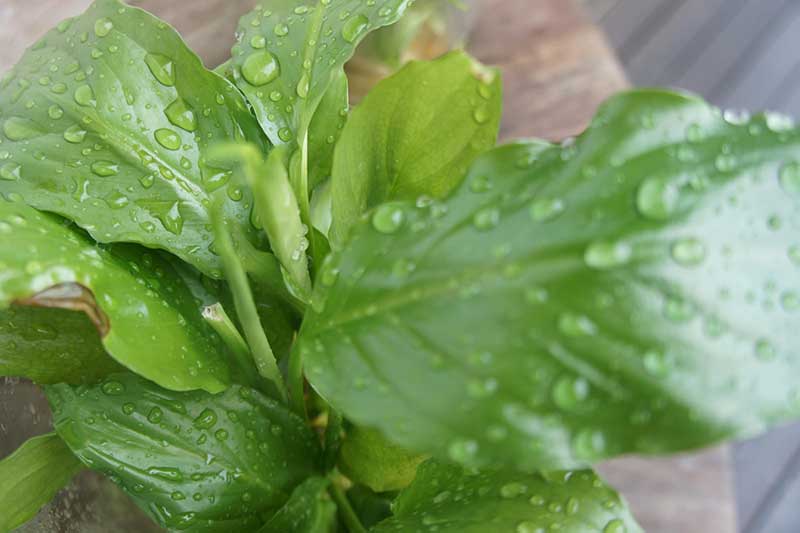
Komatsuna
Komatsuna, also known as Japanese mustard spinach, has a mild and slightly peppery taste, similar to spinach or mustard greens.
In terms of texture, komatsuna leaves are tender and smooth, making them enjoyable to eat both raw and cooked. When cooked, they tend to retain their crispness, adding a delightful crunch to stir-fries and salads.
Komatsuna can be sautéed, stir-fried, boiled, or even used in soups and stews. Its mild flavor allows it to blend well with other ingredients, complementing the overall taste of the dish. It can also be used as a substitute for spinach or other greens in many recipes.
It is low in calories but high in essential vitamins and minerals. Komatsuna is an excellent source of vitamin C, vitamin A, calcium, iron, and folate. It also contains beneficial antioxidants, dietary fiber, and omega-3 fatty acids, promoting overall well-being and supporting a healthy immune system.

Mizuna
With a crisp and mildly peppery taste, mizuna adds a delightful zest to dishes. Its slender, serrated leaves offer a delicate yet slightly crunchy texture, making it an appealing addition to salads, stir-fries, and soups.
Mizuna can be used as a flavorful substitute for other greens like spinach or arugula. It pairs well with both mild and bold flavors, making it a popular choice in Asian-inspired dishes.
This leafy green is low in calories and high in vitamins A, C, and K, as well as folate and iron. It is also rich in antioxidants, which help protect against cellular damage and support overall well-being.
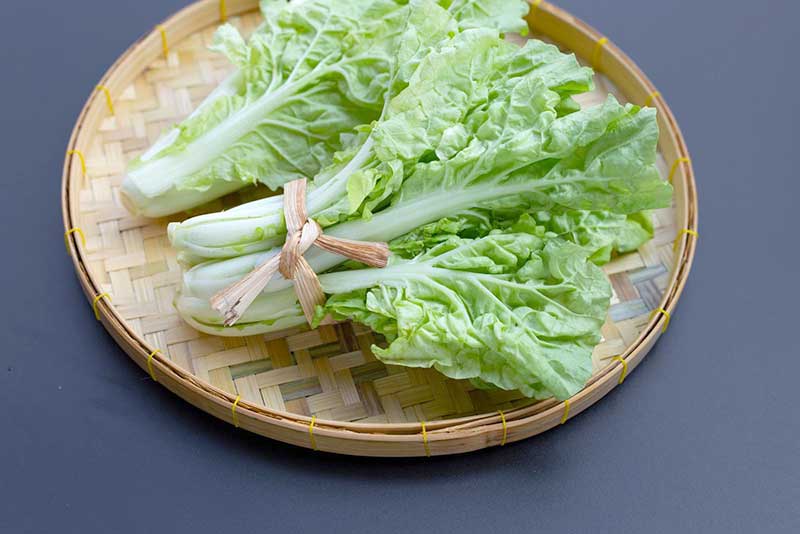
Chinese Cabbage
Chinese cabbage has a mild and slightly sweet taste, similar to regular cabbage but milder. It has a crisp and crunchy texture, making it a perfect addition to salads and slaws. Chinese cabbage can also be stir-fried or sautéed, where it retains its crunch even after cooking. It is commonly used in dishes like kimchi, dumplings, spring rolls, stir-fries, and soups.
From a nutritional perspective, Chinese cabbage is low in calories and fat, making it a great choice for weight management. It is also rich in vitamins A, C, and K, as well as minerals like calcium and potassium. It’s high in dietary fiber, which aids digestion and promotes a healthy gut.

Rapini
Rapini, also known as broccoli rabe or broccoli raab, is highly nutritious and offers a unique flavor. In terms of taste, rapini has a slightly bitter and pungent flavor that can be described as a combination of broccoli and mustard greens. Its texture is tender yet slightly chewy, with leafy greens and thinner stems.
Rapini is commonly sautéed, steamed, or boiled before being added to pasta, stir-fries, soups, or served as a side dish. Its bold flavor pairs well with garlic, lemon, chili flakes, and olive oil.
Nutritionally, rapini is low in calories, yet packed with vitamins A, C, and K, as well as calcium, iron, potassium, and fiber. It also contains powerful antioxidants that contribute to overall health and well-being.

Cress
Cress brings a fresh, peppery flavor to dishes. Its tender leaves have a delicate texture, adding a pleasant crunch to salads and sandwiches. Cress is known for its culinary uses as it blends well with other greens, adding a zesty kick to any recipe.
This versatile green is rich in vitamins A, C, and K, making it an excellent source of antioxidants that promote healthy skin and a strong immune system. Additionally, cress contains iron, calcium, and magnesium, supporting bone health and overall vitality.
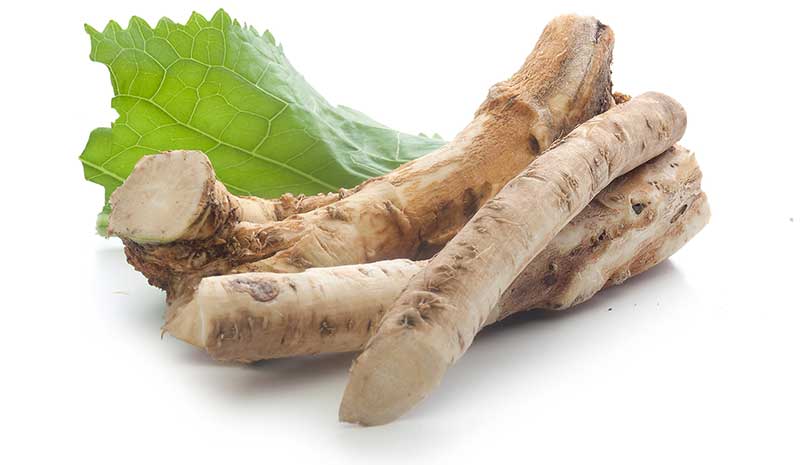
Horseradish
Horseradish is a pungent root vegetable renowned for its distinct flavor. It boasts a sharp, hot taste that adds a zesty kick to a variety of dishes. With a texture similar to that of a firm, white radish, it is often grated or ground before consumption.
It can be incorporated into numerous recipes, including sauces, dips, and marinades, due to its ability to enhance the taste and complexity of a dish. It pairs exceptionally well with meats, such as roast beef and smoked fish, bringing an added depth of flavor.
Additionally, it can be used in salad dressings, sandwiches, and even cocktails for an unexpected twist.
Horseradish is low in calories and fat while providing a good source of dietary fiber. It also contains notable amounts of vitamin C and potassium, which contribute to overall health and well-being. Moreover, horseradish is known to possess certain antimicrobial properties.
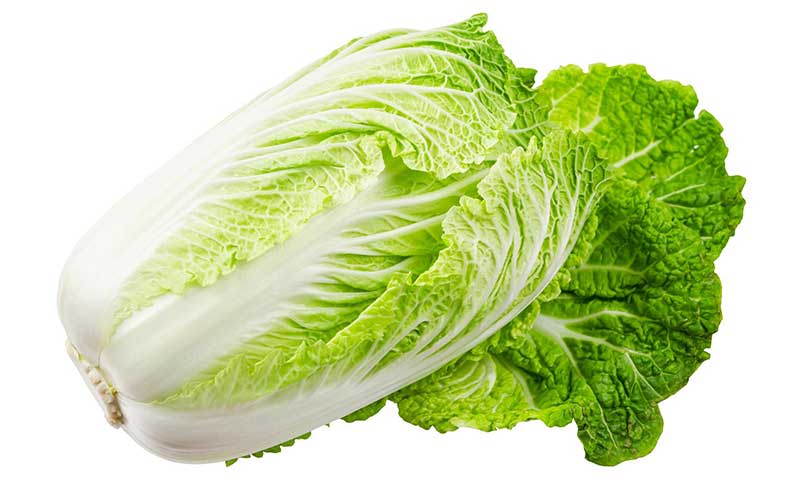
Napa Cabbage
Napa cabbage, also known as celery cabbage, is a nutrient-rich vegetable. It features a mild and slightly sweet taste, with a delicate crunch and tender texture. This cabbage variety is popular in Asian cuisine, particularly in stir-fries, soups, and kimchi.
Napa cabbage is low in calories and fat and is an excellent source of vitamins A and C, which play a crucial role in boosting immunity and promoting healthy skin. Additionally, Napa cabbage contains high levels of fiber, potassium, and calcium, supporting digestion, heart health, and bone strength.

Tatsoi
Tatsoi is known for its mild, slightly mustard-like flavor and offers a unique taste that is both earthy and slightly tangy. Its tender leaves have a velvety texture, making it delicious to eat both raw and cooked.
It can be enjoyed fresh in salads, providing a refreshing crunch and subtle spiciness. When cooked, tatsoi adds a delightful depth to stir-fries, soups, and sautés. Its mild flavor pairs well with a variety of other ingredients, making it a flexible choice for creative recipes.
This green leafy vegetable is an excellent source of vitamins A, C, and K, providing essential nutrients that support a healthy immune system, bone health, and optimal vision. Additionally, tatsoi is rich in folate, iron, and calcium, making it a valuable addition to a well-balanced diet.
Peppergrass
Peppergrass is a nutrient-rich cruciferous vegetable known for its distinct flavor and various culinary uses. It is valued for its peppery taste, similar to arugula or watercress, adding a zesty kick to dishes. In terms of texture, peppergrass leaves are tender and slightly crisp.
Peppergrass can be used as a flavorful garnish, adding a spicy twist to soups, stews, and sauces. It can also be incorporated into salads or mixed with other leafy greens for an extra burst of flavor. Some people even use peppergrass to enhance the health benefits of smoothies for a nutritious boost.
Loaded with vitamins and minerals, it provides a good source of vitamins A, C, and K. Additionally, it contains folate, iron, calcium, and antioxidants that contribute to overall health and wellbeing.

Chinese Broccoli
Chinese broccoli, also known as gai lan or Chinese kale, boasts a slightly bitter and earthy flavor, which is often described as being more pronounced compared to regular broccoli.
Its tender stalks and dark green leaves contribute to a pleasant and crisp texture. Chinese broccoli pairs well with stir-fries, soups, and even steamed as a simple side dish. Its robust flavor allows it to stand out when combined with other ingredients, enhancing the overall taste profile of the dish.
Chinese broccoli is low in calories and full of essential vitamins and minerals, including vitamins A, C, and K. It’s is also an excellent source of dietary fiber, which aids in digestion and promotes a healthy gut.
Additionally, Chinese broccoli contains important phytochemicals such as glucosinolates and sulforaphane, known for their potential anti-inflammatory and cancer-fighting properties.
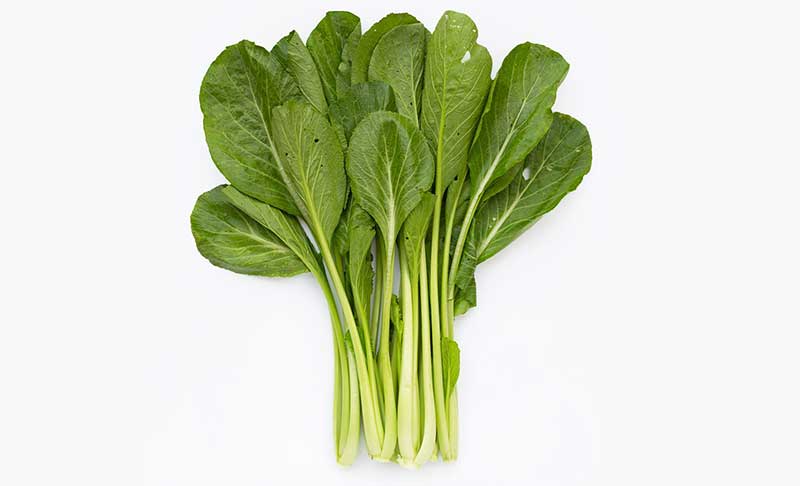
Choy Sum
Choy sum is a flavorful and nutritious with a distinctive taste and unique texture. It offers a delicate yet slightly bitter flavor profile. Its tender leaves and stalks provide a pleasant crunch.
Choy sum can be enjoyed steamed, stir-fried, sautéed, or even added to soups and stews.
It is low in calories but packed with essential vitamins and minerals. This leafy green is an excellent source of vitamin C, vitamin K, and folate. Additionally, it boasts high levels of antioxidants, which help combat inflammation and promote overall health.

Savoy Cabbage
With a mild and slightly sweet taste, this cabbage variety offers a tender and delicate texture and a more subtle flavor compared to other cabbage types, making it especially versatile in cooking. Its leaves are tender and have a crinkled appearance.
It can be enjoyed raw in salads, providing a crunchy element, or cooked in stir-fries, soups, stews, and side dishes. The leaves can be used as wraps for fillings or added to casseroles for added depth of flavor. Savoy cabbage also holds up well when pickled or fermented, allowing for longer-term preservation.
Savoy cabbage is low in calories and a great source of dietary fiber, helping to support digestive health. It is also rich in vitamins C, K, and E, while providing essential minerals such as potassium and calcium. Furthermore, savoy cabbage contains powerful antioxidants that have been associated with reducing inflammation and promoting overall well-being.
How Many Vegetables Should I Eat Per Day?
To maintain a healthy lifestyle, it is recommended that adults consume about 2 to 3 cups of vegetables per day. Including a variety of vegetables, such as leafy green superfoods in your diet ensures a wide range of essential nutrients.
Remember, eating the rainbow is key to achieving optimal health, and this cruciferous vegetables list has some great options!
How to Store Cruciferous Vegetables
To maximize their freshness and retain their nutritional value, proper storage is crucial. Here’s the best way to store cruciferous vegetables to help you maintain their quality and flavor.
- Preparing for storage: Before storing, discard any damaged or wilted leaves and trim the stems if necessary. It’s best to keep the vegetables intact until ready to use to maintain their freshness.
- Packaging: For optimal storage, wrap each vegetable individually in a damp paper towel or place them in a perforated plastic bag. This helps to maintain moisture and prevent wilting. Alternatively, you can use reusable mesh produce bags for better air circulation.
- Temperature and Humidity: Cruciferous vegetables thrive in a cool and moderately humid environment. Set your refrigerator at around 32-36°F (0-2°C) to prevent freezing. Avoid storing them in the coldest section, such as near the back of the fridge, as this may cause wilting.
- Refrigeration: Cruciferous vegetables should be stored in the refrigerator to slow down their natural decomposition process. Place them in the vegetable crisper drawer, which offers a slightly higher humidity level and cooler temperature, ideal for these veggies.
- Shelf Life: When stored properly, most cruciferous vegetables can last up to a week. Keep an eye on any signs of decay, such as yellowing or wilting, and use them promptly to enjoy their optimal flavor and nutritional benefits.
- Freezing: When comparing nutrients of frozen vs fresh vegetables, you’ll be glad to know that frozen veggies maintain most nutrients. If you have excess cruciferous vegetables that you can’t consume before they spoil, consider freezing them. Blanching the veggies before freezing helps to preserve their texture and color. After blanching, quickly cool them in ice water, pat them dry, and pack them in airtight freezer bags or containers.
Health Benetfits of Cruciferous Vegetables
We covered a bit if the individual health benefits in our cruciferous vegetables list above. But, here are some overall health benefits of cruciferous vegetables.
- Cardiovascular health: Cruciferous veggies promote heart health by lowering cholesterol levels and reducing the risk of heart disease.
- Cancer prevention: Rich in antioxidants and phytochemicals, cruciferous vegetables have been shown to reduce the risk of certain types of cancer, including breast, lung, and colon cancers.
- Digestive health: These veggies are high in fiber, which aids digestion, prevents constipation, and maintains a healthy gut.
- Anti-inflammatory properties: Cruciferous vegetables contain anti-inflammatory compounds that help reduce chronic inflammation in the body, reducing the risk of chronic diseases.
- Weight management: Low in calories and high in fiber, cruciferous veggies promote satiety and aid in weight loss efforts.
- Eye health: Loaded with vitamins A and C, these veggies support healthy vision and protect against macular degeneration and cataracts.
- Bone health: Cruciferous vegetables are excellent sources of calcium, which contributes to strong and healthy bones.
- Immune system support: Packed with vitamin C, these veggies boost immunity and help defend against common illnesses.
- Brain health: The high folate content in cruciferous vegetables is associated with improved cognitive function and reduced risk of neurodegenerative diseases.
- Detoxification: Cruciferous veggies contain sulfur compounds that support natural detoxification processes in the body.
- Anti-aging: Rich in antioxidants, cruciferous vegetables help combat oxidative stress, protecting cells from premature aging.
- Hormone balance: Indole-3-carbinol, found in cruciferous vegetables, aids in balancing hormone levels, especially estrogen.
- Diabetes prevention: The high fiber and low glycemic index of these veggies contribute to better blood sugar control and lower diabetes risk.
- Skin health: Nutrients like vitamin C, vitamin E, and beta-carotene found in cruciferous veggies promote healthy skin and a youthful complexion.
- Anti-microbial properties: Some compounds in cruciferous vegetables have antimicrobial effects, helping to fight off harmful bacteria and viruses.
- Anti-depressant effects: Certain compounds in these veggies have been linked to improved mood and reduced symptoms of depression.
- Liver health: Cruciferous vegetables support liver function, aiding in detoxification and reducing the risk of liver disease.
- Energy boost: The rich array of vitamins and minerals in cruciferous veggies provide a natural energy boost, combating fatigue.
- Anti-allergic properties: Sulforaphane, present in cruciferous veggies, exhibits anti-allergic effects, reducing the severity of allergies.
- Respiratory health: These veggies are known to improve lung function and reduce the risk of respiratory conditions like asthma.
- Anti-arthritic effects: Cruciferous vegetables possess anti-inflammatory properties that can help reduce pain and inflammation associated with arthritis.
- Blood pressure control: Potassium and magnesium, abundant in cruciferous veggies, contribute to maintaining healthy blood pressure levels.
- Digestive enzyme stimulation: These veggies stimulate the production of digestive enzymes, improving nutrient absorption.
- Hair and nail health: Cruciferous vegetables contain nutrients like biotin and sulfur, promoting healthy hair and strong nails.
- Post-workout recovery: Cruciferous veggies provide essential nutrients that aid in muscle recovery and repair after intense workouts.
Who should not eat cruciferous vegetables?
Individuals with underactive thyroid conditions, digestive sensitivities, or those taking blood-thinning medications should consider moderating or avoiding cruciferous vegetables based on their specific circumstances. If you are prone to kidney stones, it’s important to eat these vegetables in moderation.
As always, it is essential to consult with a healthcare professional or registered dietitian for personalized advice regarding your dietary choices or health condition.
What happens if you eat too much cruciferous vegetables?
While cruciferous vegetables offer numerous health benefits and should be part of a healthy diet, it’s essential to enjoy them in moderation to avoid potential side effects, such as: digestive discomfort (bloating and gas), increased oxalate levels (can produce kidney stones).

